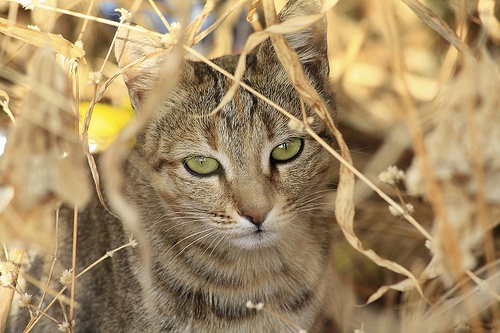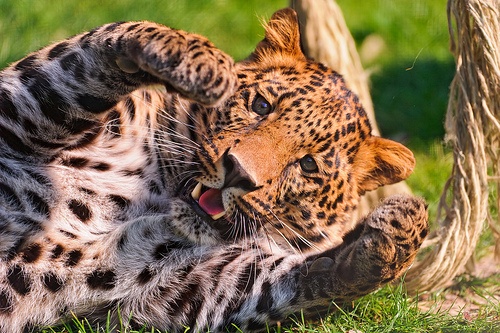Blog
Wild Thing
September 20, 2012

Even the smallest, gentlest cat is a wild thing, genetically speaking. The domestic house cat is not actually domestic; rather, Felis Domesticus is an essentially feral species that have made accommodations to live intimately with humans. The cat’s ancient predator behaviors are very much a part of its present-day life.
The present-day housecat descended from a small wild cat native to the deserts of North Africa. Recent discoveries of cats buried with humans indicate that people had special bonds with cats nearly 10,000 years ago in the Middle East—the Fertile Crescent. People were starting to grow crops and stay in place rather than hunting and gathering all of their food on the move. Cats were attracted to settlements of people growing grains, which drew mice and rats. Cats and humans had a working relationship in which cats controlled disease-carrying, grain-eating vermin in exchange for a certain amount of shelter and protection.

Somewhere along the line cats and people developed intentional relationships and the Middle Eastern wild cat transformed into the affectionate companion that we know today. That is not to say that he was domesticated. Historically, until relatively recently, cats haven’t been fed or allowed into the home by people. They have retained their keen hunting instincts because they have had to catch their own food. Cats were free to roam and had little controlled breeding, unlike the dog. Thousands of years of environmental pressures have molded the cat into a perfect carnivore that is unlike any other animal in our lives. Its predator behaviors and physiology are the core of its physical and psychological well-being. If we would keep our cats healthy and happy, we cannot forget this truth.



